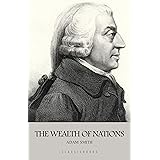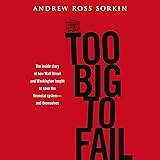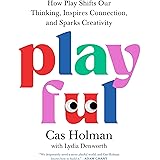Decoding Gold Purity: Why Your Jewelry’s Value is More Than Skin Deep
Ever wondered why the gleaming gold bracelet in your collection doesn’t command the same price as a solid gold coin of similar weight? As the video above succinctly explains, the distinction lies in one critical factor: gold purity. It’s a common misconception that all gold is created equal, especially when discussing its intrinsic value.
Understanding gold purity is paramount for anyone holding gold, whether as a cherished heirloom or a strategic investment. This critical metric, measured in karats, dictates the actual gold content within an item. Failing to grasp this concept can lead to significant miscalculations when assessing an item’s true worth in the precious metals market.
This deep dive into the world of karats will demystify gold’s composition. We examine why your jewelry’s weight isn’t always its worth. We discuss the global standards and practical implications for gold owners.
Let’s unlock the secrets behind gold’s allure and its actual valuation. This exploration helps you accurately appraise your precious metal holdings. It clarifies what defines true gold value.
Understanding Gold Karats: The Standard of Fineness
1. What exactly does “karat” signify in the context of gold? Karat serves as the primary unit of measurement for gold’s fineness. This ancient system quantifies the proportion of pure gold within an alloy. It uses a base of 24 parts.
A 24-karat gold piece, for instance, represents pure gold, containing 99.9% or higher gold content. This is the zenith of gold purity, a material of exceptional malleability. Its softness makes it less suitable for everyday jewelry.
Conversely, lower karat values indicate the presence of other metals blended with the gold. These additional elements, often copper, silver, or palladium, create an alloy. Alloys enhance durability and alter color.
This alloying process is akin to blending paints to achieve a specific hue and strength. Each metal contributes unique properties. The resultant alloy possesses distinct characteristics.
The choice of alloy depends heavily on the intended use. It influences both the aesthetic appeal and structural integrity. A specific blend targets durability and specific color profiles.
This fundamental understanding of karats is vital. It provides the basis for assessing any gold item’s true gold content. This knowledge empowers more informed decisions.
The Purity Spectrum: From 24K Bullion to Everyday Wear
2. The gold purity scale spans a wide range, from investment-grade bullion to the common jewelry worn daily. As the video highlights, 24-karat gold signifies virtually pure gold, reaching 99.9% fineness. This level of purity is typically reserved for bullion products like coins and bars. Examples include the South African Krugerrand or various gold ingots.
Moving down the scale, 18-karat gold offers a significant purity, comprising 75% pure gold. This popular choice strikes a balance between richness and durability. It contains 18 parts gold to 6 parts alloy.
The most prevalent standard for gold jewelry in the United States is 14-karat gold, which contains 58.5% pure gold. This composition means 14 parts gold and 10 parts alloy. This alloy provides superior strength and resistance to wear and tear. It also offers a more accessible price point.
Each karat level represents a precise gold-to-alloy ratio. This ratio fundamentally impacts the item’s inherent value. It also dictates its physical properties. It acts as a blueprint for material characteristics.
Think of it like different grades of steel; each has a specific composition for a particular application. Similarly, gold alloys are engineered. They meet specific needs for durability, color, and cost effectiveness. This strategic blending optimizes functionality and aesthetic appeal.
The Role of Alloys: Enhancing Gold’s Properties
3. Gold, in its pure 24K state, is remarkably soft and pliable. Imagine trying to build a sturdy house with wet clay; it lacks the necessary structural integrity. This inherent softness makes pure gold impractical for most jewelry. Jewelry needs to withstand daily wear and tear. Therefore, alloying becomes essential.
Various metals are mixed with pure gold to create alloys, each imparting distinct characteristics. Copper, for example, adds strength and a reddish hue, foundational for rose gold. Silver brightens the gold and contributes to white gold alloys. Zinc and nickel are also common additives, further enhancing durability.
These alloys don’t just increase hardness; they also introduce a spectrum of colors beyond traditional yellow. White gold, achieved by alloying gold with white metals like palladium or nickel, offers a contemporary aesthetic. Green gold, a less common variant, typically incorporates silver and sometimes cadmium. This creates a unique greenish tint.
The specific alloy recipe is a precise science, influencing both the final color and the physical properties of the gold piece. Each metal addition acts as a modifier, fine-tuning the material. This transforms soft gold into a resilient, vibrant medium. This chemical alchemy is fascinating. It expands gold’s versatility dramatically.
Geographical Karat Preferences: A Global Perspective
4. Gold purity standards exhibit fascinating variations across different cultures and regions. As mentioned in the video, countries like India and China often favor higher karat gold for jewelry. It’s common to find 22-karat or even 24-karat gold pieces in these markets. In India, gold jewelry often serves as a significant financial investment. Higher purity is preferred for its intrinsic value and cultural significance. This cultural preference treats gold not just as adornment but also as a form of liquid asset. It reflects deep-seated traditions and economic realities.
In the Middle East, particularly in regions like Dubai, 22-karat gold is also exceptionally popular. Shoppers there gravitate towards the rich color and perceived higher value of purer gold. This preference underscores a global divergence in consumer taste and investment priorities. It highlights gold’s dual role as both ornament and store of wealth.
Conversely, Western markets, including the United States and Europe, generally prefer lower karat gold for jewelry. Karats like 14K and 10K are widespread. These lower purities offer increased durability for active lifestyles. They also present more affordable price points. This reflects a practical approach to jewelry design.
These differing preferences impact global gold trading and valuation. An item’s karat content often reflects its country of origin. This also influences its perceived market value. Understanding these geographical nuances is crucial for international gold transactions. It adds a layer of complexity to appraisal.
The Weight-Purity Conundrum: When an Ounce Isn’t an Ounce
5. The core message from the video resonates deeply here: “when an ounce isn’t an ounce.” This refers to the critical distinction between gross weight and actual gold content. A piece of jewelry weighing one ounce might not contain one full ounce of pure gold. Its karat rating determines the actual precious metal quantity.
Consider two rings, both weighing exactly 10 grams. If one is 24K gold and the other is 14K gold, their intrinsic value differs vastly. The 24K ring contains almost 10 grams of pure gold. The 14K ring, however, holds only 5.85 grams of pure gold (58.5% of 10 grams). The remaining weight comes from less valuable alloys.
This is where the concept of “melt value” becomes crucial for valuation. Melt value represents the worth of the pure gold content, stripped of any artistic or brand premiums. It’s the price a refiner would pay for the raw metal. Investors and sellers often focus on this figure.
Furthermore, gold is typically measured in troy ounces, which are slightly heavier than avoirdupois ounces (the standard ounce for most goods). One troy ounce equals 31.1035 grams. An avoirdupois ounce is 28.3495 grams. This subtle but significant difference further complicates calculations for those unfamiliar with precious metal metrics.
To accurately assess value, one must always convert total weight to pure gold content using the karat percentage. Then, apply the current market price per troy ounce of pure gold. This methodical approach ensures precision. It avoids costly misjudgments. It is the only reliable valuation method.
Practical Steps for Valuing Your Gold Jewelry
6. Accurately valuing gold jewelry involves a systematic approach, moving beyond simple visual assessment. Firstly, identify any hallmarks or stamps on your piece. These small engravings typically indicate the karat fineness (e.g., 14K, 585 for 14K, 750 for 18K). They also identify the manufacturer or country of origin.
Secondly, weigh your gold item precisely. Use a jeweler’s scale capable of measuring in grams or troy ounces. Household scales often lack the necessary precision for precious metals. Accuracy here is absolutely crucial.
Thirdly, determine the current spot price of gold. This is the real-time market price for one troy ounce of pure (24K) gold. Financial news sites and dedicated precious metal dealers provide this dynamic data. This fluctuating price dictates intrinsic value.
Finally, perform the calculation. Multiply the item’s total weight by its purity percentage (e.g., for 14K, multiply by 0.585). This gives you the net weight of pure gold. Then, multiply this net weight by the current spot price per unit of pure gold. This yields the melt value. This simple formula provides a solid foundation for appraisal.
For items with significant aesthetic or historical value, consider seeking a professional appraisal. A certified gemologist or appraiser can account for craftsmanship, gemstones, and provenance. This adds subjective value. They provide a comprehensive valuation. This ensures all factors contribute to the final assessment.











